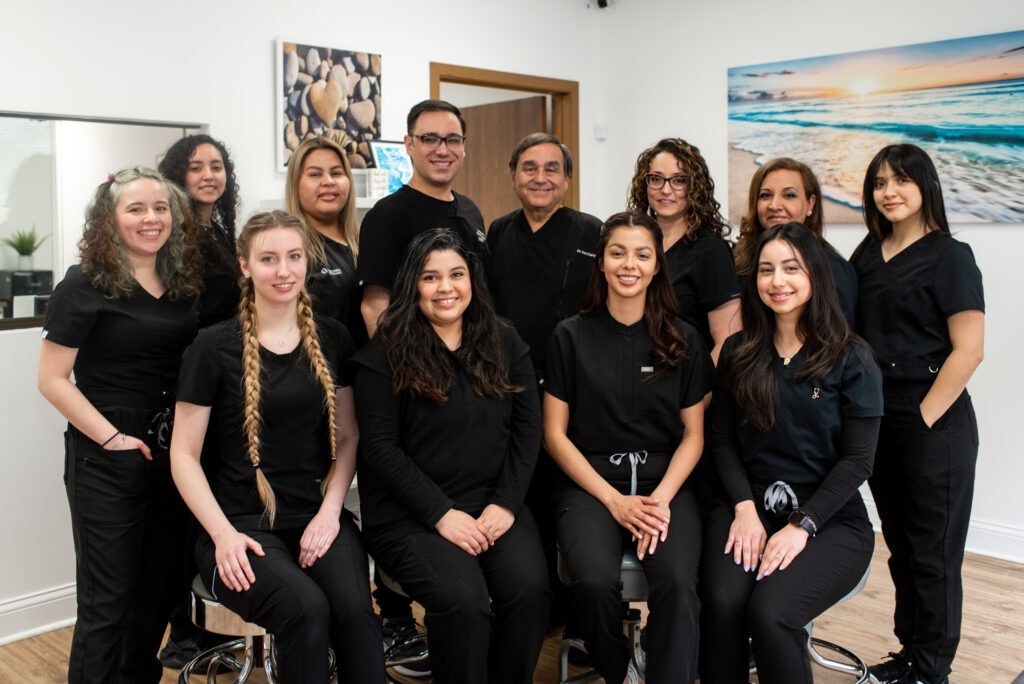Skin health is a journey filled with questions, concerns, and the quest for clarity. Rosacea, with its unique challenges, often leaves many seeking answers. At Chicago Skin Clinic, we see many patients whose rosacea symptoms worsened without treatment over time because they didn’t know they had the condition. Recognizing the early signs is crucial, and learning how to tell if you have rosacea can make all the difference.
What Is Rosacea?
Imagine having a perpetual blush—not from that unexpected compliment, but from a skin condition that decides to pop in uninvited. Rosacea is not just a fancy name for a rosy complexion; it’s actually an incurable, chronic skin disorder that primarily affects the face.
The depth of rosacea goes beyond the surface. Redness and bumps are the most visible signs. The condition can also be very uncomfortable. Some individuals experience a burning or stinging sensation on their skin, making even the simplest skincare routine feel like a challenge. Others might notice their skin becoming more sensitive, reacting to products they’ve used for years.
Even though rosacea might sound like an unfortunate cosmetic concern with occasional discomfort at first, it’s more than skin-deep. Beyond the physical symptoms, it can affect one’s self-esteem and confidence. Fortunately, there’s a silver lining: managing rosacea is entirely possible with proper understanding and care.
What Causes Rosacea?
The exact origins of rosacea remain a bit of a dermatological enigma. While we can’t point to a single culprit, several factors are believed to play a role. For starters, blood vessel abnormalities might be causing that signature redness. Another potential cause is microscopic skin mites (don’t worry, we all have them!), which are present in higher numbers on rosacea-prone skin.
Causes Of Flare-Ups
Sun exposure, wind, and even extreme temperatures can act as triggers, turning up the heat on rosacea flare-ups.
Dietary choices and certain lifestyle habits can also be potential party crashers. Love spicy foods or a glass of red wine? They might be delicious, but they’re also on the list of common rosacea triggers. Stress, too, can fan the flames, making relaxation and self-care essential for those with this condition.
Who Normally Gets Rosacea?
Rosacea isn’t picky, but it does have its favorites. Most commonly, it graces the faces of individuals between 30 and 50 years old. Women, especially during menopause, tend to suffer from it more frequently, but it is not uncommon for men to experience the condition. Fair-skinned folks find themselves on rosacea’s guest list more often, though some wonder if it’s underdiagnosed in people with darker skin because the redness might not be as noticeable. And if your family gatherings have a few rosy-cheeked relatives, genetics might mean you’re more likely to join the rosacea club.

Do I Have Rosacea?
Skin conditions can be confusing to an untrained eye, especially when symptoms overlap. So, how can you tell if it’s rosacea knocking on your skin’s door? The hallmark sign is persistent redness on the face, especially the cheeks, nose, chin, and forehead. But rosacea loves company. It often brings friends like visible blood vessels, swollen red bumps, and even pimple-like breakouts. Think of it as your skin throwing a little (unwanted) party.
Feeling a burning or stinging sensation? That could be another clue. And if your eyes decide they don’t want to experience party FOMO and develop symptoms like dryness, redness, swelling or irritation, you might be dealing with ocular rosacea.
But here’s the catch: while these signs can point towards rosacea, other conditions can mimic its appearance, like acne, eczema, or allergic reactions. The best way to get a clear answer? Consult our dermatologists, Dr. Danny and Dr. Del Campo. They’ll help you decode your skin’s messages and guide you toward clarity and comfort.
Treatment Options
Now, let’s talk about care options! As mentioned before, rosacea is incurable, but symptoms can be managed.
Treatment begins with a tailored approach, addressing your unique skin needs. Topical treatments, like creams or gels, can soothe redness and reduce inflammation. For those deeper, stubborn bumps, oral medications might be the ticket. Laser and light therapies are modern options that offer promising results, targeting visible blood vessels and reducing overall redness.
Remember, there’s no one-size-fits-all approach. Dr. Danny and Dr. Del Campo can assist you on the path to finding the proper treatment that allows your skin to shine.

Want To Achieve Your Skin Goals? Visit Chicago Skin Clinic!
At Chicago Skin Clinic, we believe every individual deserves radiant, healthy skin. With our team’s unparalleled expertise and dedication, we’re always ready to guide you through any skin challenge, ensuring you receive the best care for your unique needs. Your skin’s journey to brilliance starts here.
 SCHEDULE NOW
SCHEDULE NOW
